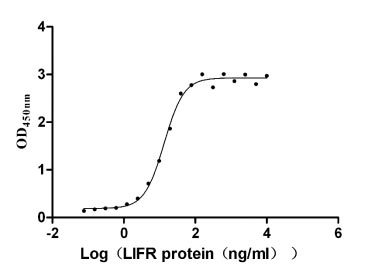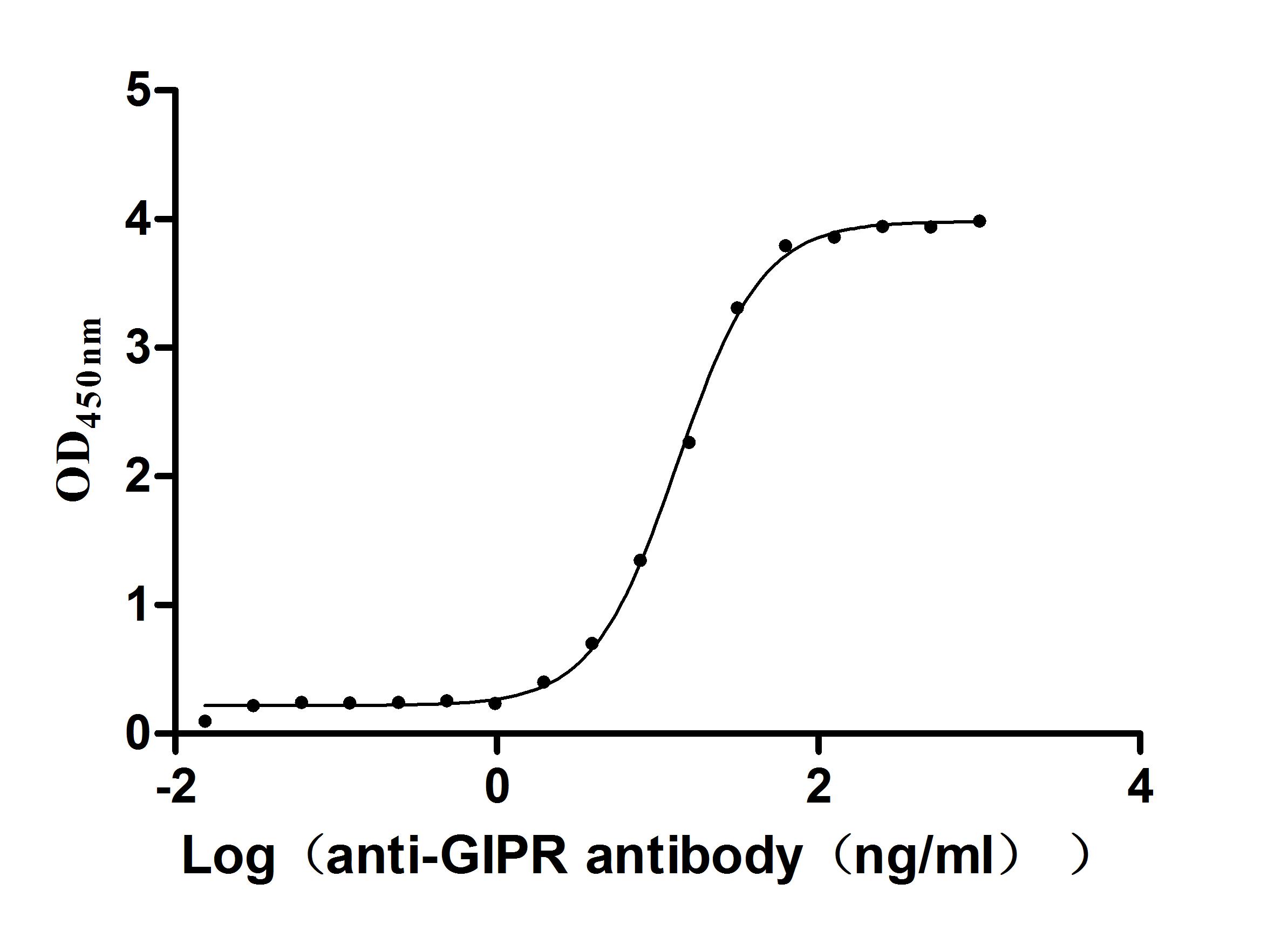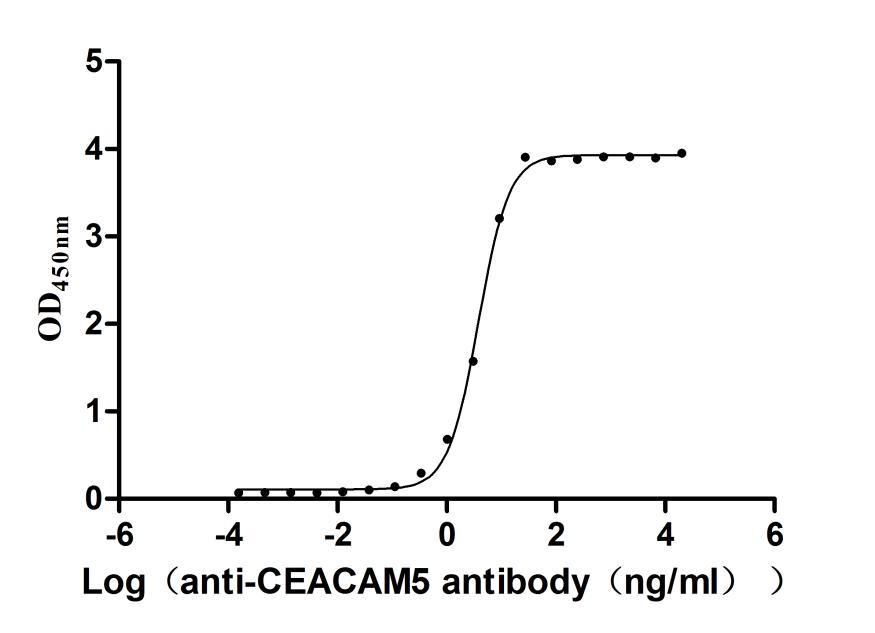Recombinant Mouse Histone H2A.Z (H2afz)
-
货号:CSB-YP010100MO
-
规格:
-
来源:Yeast
-
其他:
-
货号:CSB-EP010100MO
-
规格:
-
来源:E.coli
-
其他:
-
货号:CSB-EP010100MO-B
-
规格:
-
来源:E.coli
-
共轭:Avi-tag Biotinylated
E. coli biotin ligase (BirA) is highly specific in covalently attaching biotin to the 15 amino acid AviTag peptide. This recombinant protein was biotinylated in vivo by AviTag-BirA technology, which method is BriA catalyzes amide linkage between the biotin and the specific lysine of the AviTag.
-
其他:
-
货号:CSB-BP010100MO
-
规格:
-
来源:Baculovirus
-
其他:
-
货号:CSB-MP010100MO
-
规格:
-
来源:Mammalian cell
-
其他:
产品详情
-
纯度:>85% (SDS-PAGE)
-
基因名:
-
Uniprot No.:
-
别名:H2az1; H2afz; H2az; Histone H2A.Z; H2A/z
-
种属:Mus musculus (Mouse)
-
蛋白长度:Full Length of Mature Protein
-
表达区域:2-128
-
氨基酸序列AGGKAGKDS GKAKTKAVSR SQRAGLQFPV GRIHRHLKSR TTSHGRVGAT AAVYSAAILE YLTAEVLELA GNASKDLKVK RITPRHLQLA IRGDEELDSL IKATIAGGGV IPHIHKSLIG KKGQQKTV
-
蛋白标签:Tag type will be determined during the manufacturing process.
The tag type will be determined during production process. If you have specified tag type, please tell us and we will develop the specified tag preferentially. -
产品提供形式:Lyophilized powder
Note: We will preferentially ship the format that we have in stock, however, if you have any special requirement for the format, please remark your requirement when placing the order, we will prepare according to your demand. -
复溶:We recommend that this vial be briefly centrifuged prior to opening to bring the contents to the bottom. Please reconstitute protein in deionized sterile water to a concentration of 0.1-1.0 mg/mL.We recommend to add 5-50% of glycerol (final concentration) and aliquot for long-term storage at -20℃/-80℃. Our default final concentration of glycerol is 50%. Customers could use it as reference.
-
储存条件:Store at -20°C/-80°C upon receipt, aliquoting is necessary for mutiple use. Avoid repeated freeze-thaw cycles.
-
保质期:The shelf life is related to many factors, storage state, buffer ingredients, storage temperature and the stability of the protein itself.
Generally, the shelf life of liquid form is 6 months at -20°C/-80°C. The shelf life of lyophilized form is 12 months at -20°C/-80°C. -
货期:Delivery time may differ from different purchasing way or location, please kindly consult your local distributors for specific delivery time.Note: All of our proteins are default shipped with normal blue ice packs, if you request to ship with dry ice, please communicate with us in advance and extra fees will be charged.
-
注意事项:Repeated freezing and thawing is not recommended. Store working aliquots at 4°C for up to one week.
-
Datasheet :Please contact us to get it.
靶点详情
-
功能:Variant histone H2A which replaces conventional H2A in a subset of nucleosomes. Nucleosomes wrap and compact DNA into chromatin, limiting DNA accessibility to the cellular machineries which require DNA as a template. Histones thereby play a central role in transcription regulation, DNA repair, DNA replication and chromosomal stability. DNA accessibility is regulated via a complex set of post-translational modifications of histones, also called histone code, and nucleosome remodeling. May be involved in the formation of constitutive heterochromatin. May be required for chromosome segregation during cell division. Essential for early development.
-
基因功能参考文献:
- The data also suggest that H2A.Z restricts transcription, which is moderated by ANP32e at the promoter and gene bodies of expressed genes. Thus, ANP32e, through inhibition of PP2A, is required for nucleosomal inclusion of H2A.Z and the regulation of gene expression PMID: 29524612
- This study reveals an antagonistic relationship between H2A.Z.1ub and BRD2 to regulate the transcriptional balance at bivalent genes to enable proper execution of developmental programs. PMID: 26804911
- Embryonic stem cell BAF is required for normal H2A.Z localization in these cells, suggesting BAF either stabilizes H2A.Z containing nucleosomes or promotes subnucleosome to nucleosome conversion by facilitating H2A.Z deposition. PMID: 26411677
- Study mapped H2A.Z genome-wide in embryonic stem cells and neural progenitors; H2A.Z is deposited at promoters and enhancers, and correlates strongly with H3K4 methylation. H2A.Z is present at poised promoters with bivalent chromatin and at active promoters with H3K4 methylation, but is absent from stably repressed promoters that are enriched for H3K27 trimethylation. PMID: 23034477
- our work suggests that the divergent residues in the H2A.Z acidic patch comprise a unique domain that couples control of chromatin dynamics to the regulation of developmental gene expression patterns during lineage commitment. PMID: 23990805
- Data propose that H2A.Z mediates such contrasting activities by acting as a general facilitator that generates access for a variety of complexes, both activating and repressive. PMID: 23260488
- The variant histone H2A.Z and the winged helix transcription factor Foxa2 both act to regulate nucleosome depletion and gene activation, thus promoting embryonic stem cell differentiation, whereas DNA methylation promotes nucleosome occupation and suppresses gene expression. PMID: 23260146
- incorporation of the histone variant H2A.Z at the promoter regions of PPARgamma target genes by p400/Brd8 is essential to allow fat cell differentiation PMID: 23064015
- In mouse trophoblast stem cells, the amount of histone H2A.Z at promoters decreased during S phase, coinciding with homotypic (H2A.Z-H2A.Z) nucleosomes flanking the TSS becoming heterotypic (H2A.Z-H2A). PMID: 23085713
- It was shown that Ring1B interacted with multiple complexes in embryonic stem cells. Although H2A.Z co-localized with Eed, Ring1B and CpG islands in chromatin, H2A.Z still blanketed polycomb target loci in the absence of Suz12, Eed, or Ring1B. PMID: 22496869
- Studies indicate that the unique chromatin landscape also includes a second histone variant, H2A.Z. PMID: 22139013
- H2A.Z detection is asymmetrically associated with segregating sets of chromosomes in asymmetric self-renewing mitotic cells. PMID: 21905168
- Our results imply that antagonism between H2A.Z deposition and DNA methylation is a conserved feature of eukaryotic genes, and that transcription-coupled H2A.Z changes may play a role in cancer initiation and progression. PMID: 20709945
- Data show that RARgamma is required for deposition of H2A.Z and Suz12 at RA target genes, and that in embryonic stem cells both RARgamma and Suz12 exist in a multi-protein complex in the absence of ligand. PMID: 20857416
- These results identify SRCAP/H2A.Z-mediated chromatin remodelling as a key early event in muscle differentiation-specific gene expression. PMID: 20473270
- Pericentric heterochromatin becomes enriched with H2A.Z during early mammalian development PMID: 12660166
- Histone H2A.z is required for cardiac hypertrophy, where its stability and the extent of cell growth and apoptosis are moderated by Sir2alpha PMID: 16687393
- the X and the Y chromosome are assembled into facultative heterochromatic structures postmeiotically that are enriched with H2A.Z, thereby replacing macroH2A PMID: 16809775
- identify the essential histone variant H2A.Z as a new structural component of the centromere PMID: 17194760
- SRCAP is recruited to promoters and is critical for the deposition of H2A.Z. PMID: 17617668
- Monoubiquitinylation of H2A.Z distinguishes its association with euchromatin or facultative heterochromatin. PMID: 17636032
- H2AZ occupies a specific subset of genes in lineage-committed cells, suggesting that its dynamic redistribution is necessary for cell fate transitions PMID: 18992931
显示更多
收起更多
-
亚细胞定位:Nucleus. Chromosome.
-
蛋白家族:Histone H2A family
-
数据库链接:
KEGG: mmu:51788
STRING: 10090.ENSMUSP00000036907
UniGene: Mm.117541
Most popular with customers
-
Recombinant Human Leukemia inhibitory factor receptor (LIFR), partial (Active)
Express system: Mammalian cell
Species: Homo sapiens (Human)
-
Recombinant Human Cytotoxic and regulatory T-cell molecule (CRTAM), partial (Active)
Express system: Mammalian cell
Species: Homo sapiens (Human)
-
Recombinant Macaca Gastric inhibitory polypeptide receptor(GIPR), partial (Active)
Express system: yeast
Species: Macaca fascicularis (Crab-eating macaque) (Cynomolgus monkey)
-
Recombinant Human C-C chemokine receptor type 9 (CCR9)-VLPs (Active)
Express system: Mammalian cell
Species: Homo sapiens (Human)
-
Express system: Mammalian cell
Species: Macaca mulatta (Rhesus macaque)
-
Recombinant Human Tumor necrosis factor ligand superfamily member 15(TNFSF15) (Active)
Express system: Mammalian cell
Species: Homo sapiens (Human)
-
Recombinant Human C-C chemokine receptor type 5 (CCR5)-VLPs (Active)
Express system: Mammalian cell
Species: Homo sapiens (Human)







-AC1.jpg)











